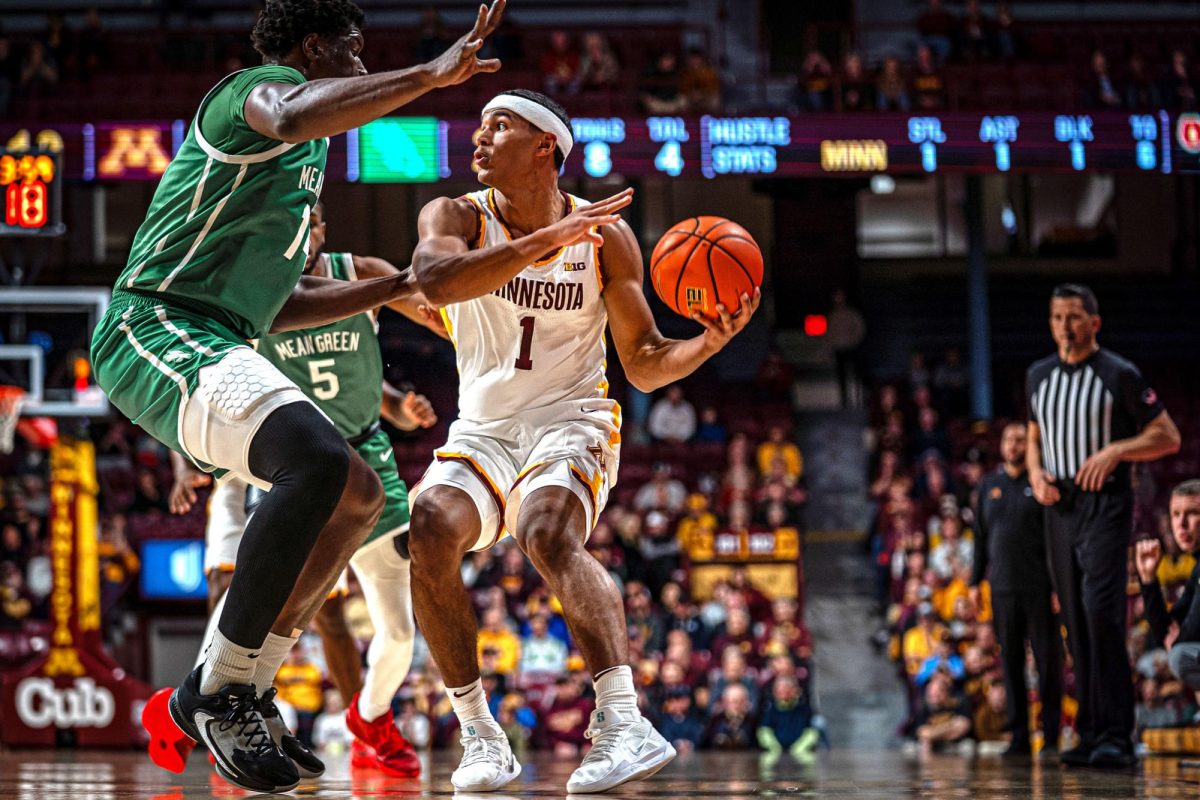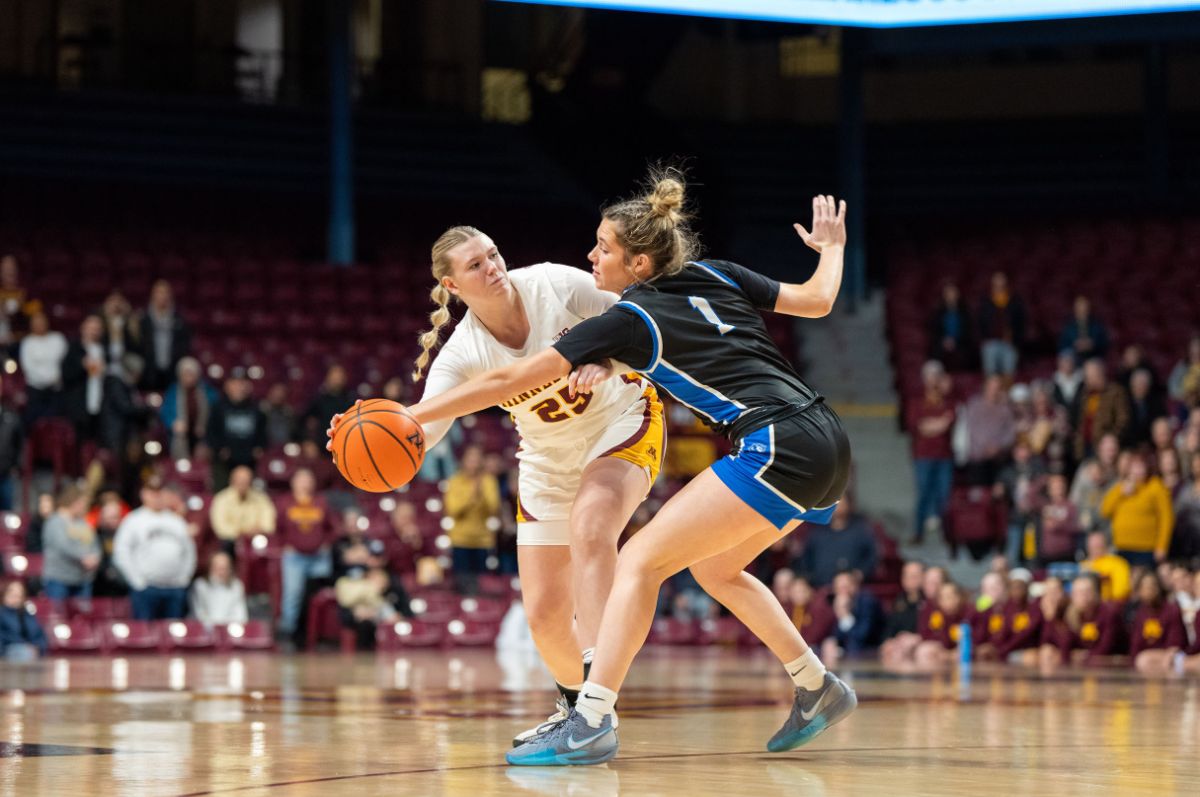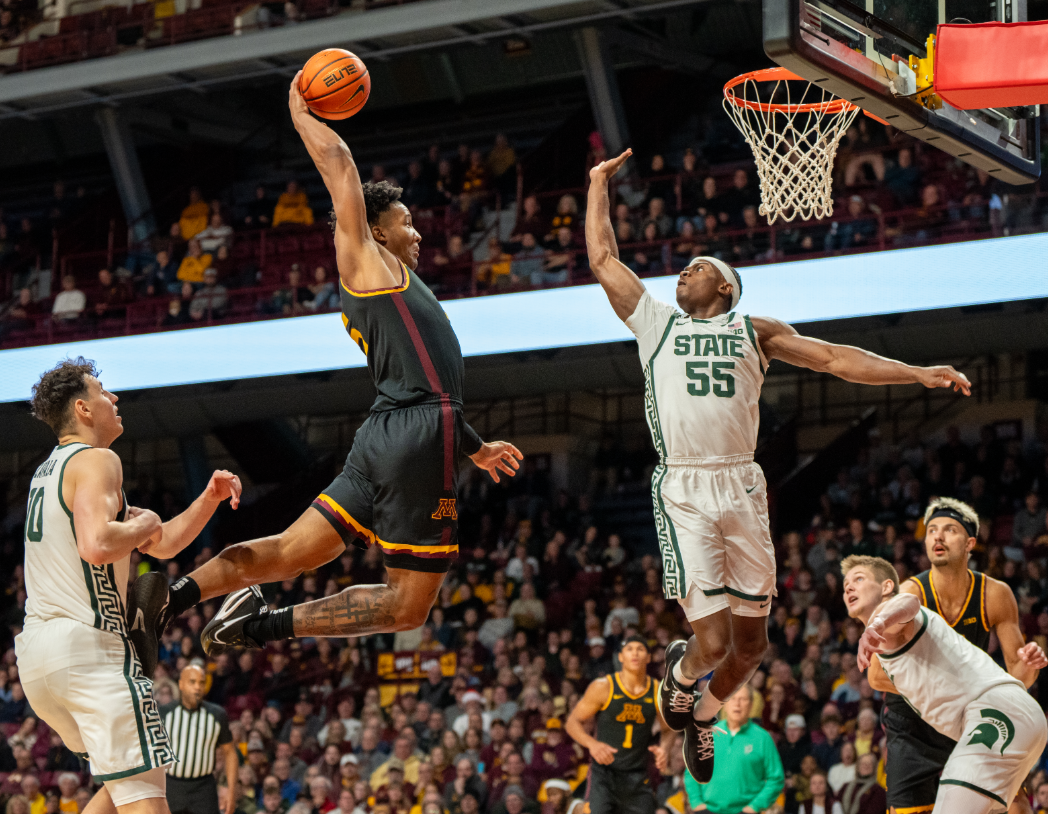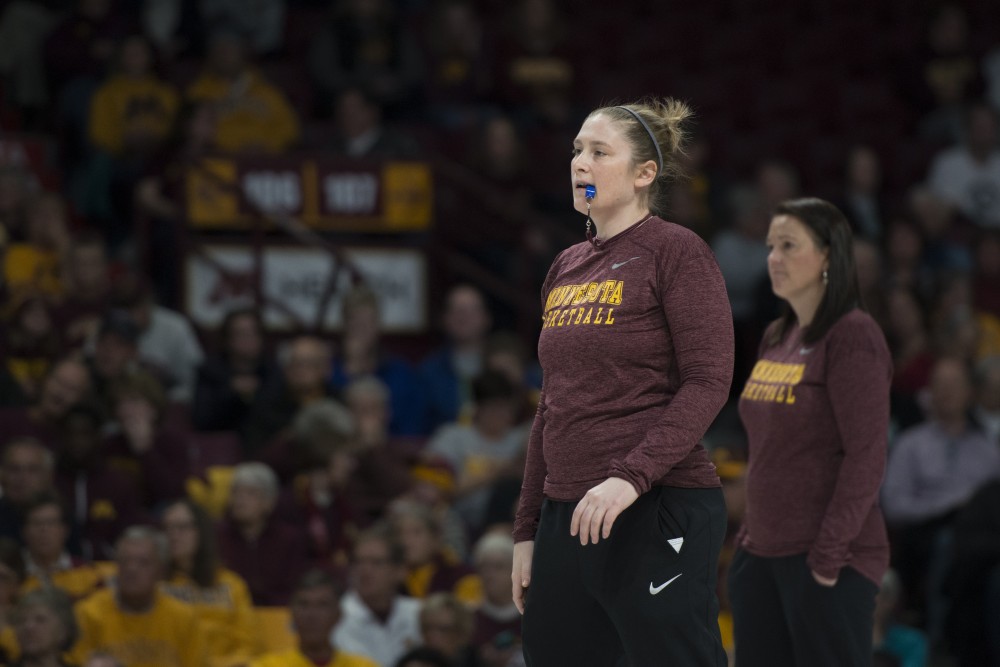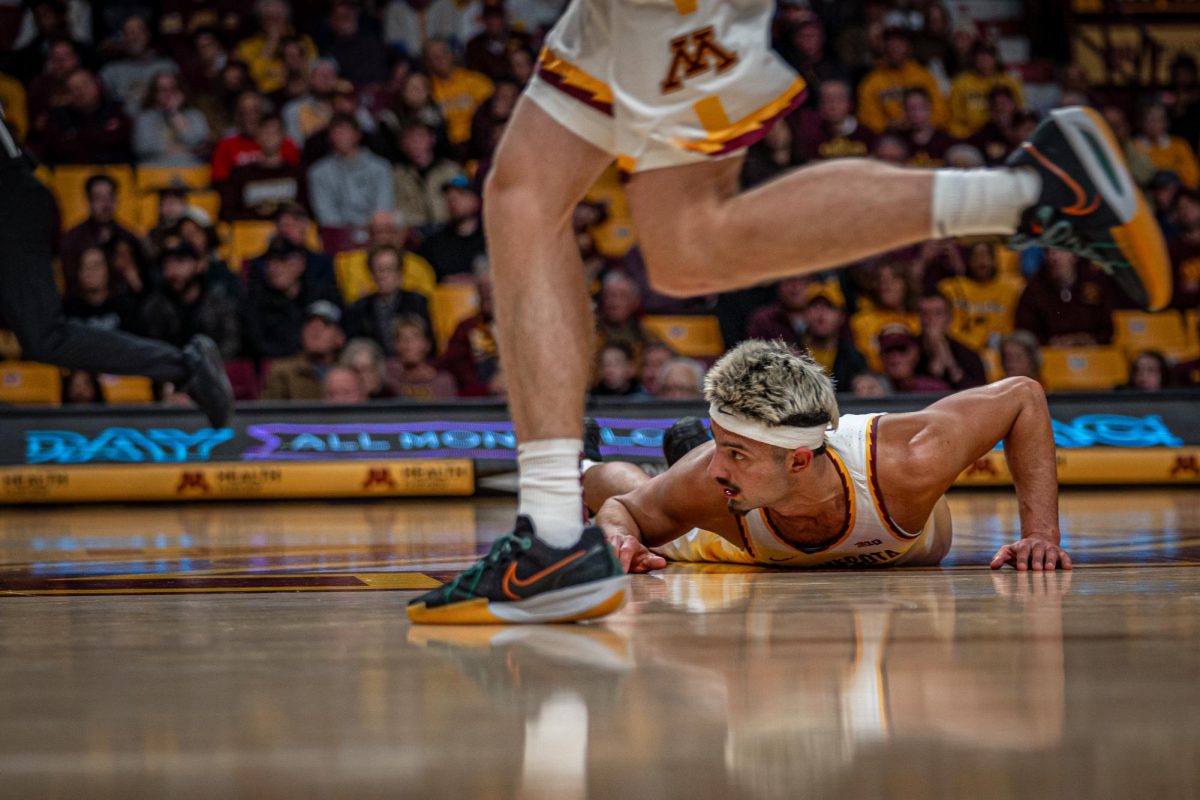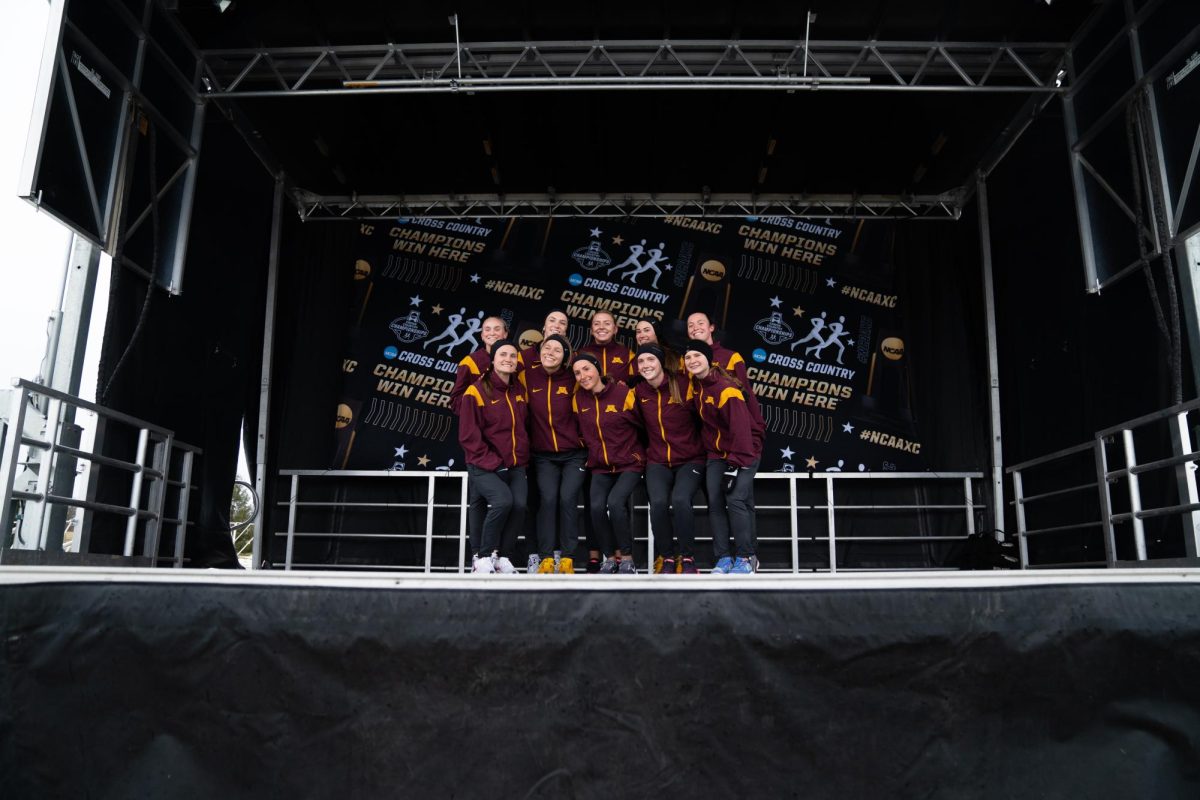For a lot of teams in a lot of sports, there’s an unwritten code that, on the outside at least, it’s a great misstep to tell people you’re going for anything other than first place. In the past decade, phrases like âÄúSuper Bowl or bustâÄù have come into style. The problem is, all but one team in any given league or conference won’t finish on top, and labeling season after season a failure can cause problems. For the Gophers men’s swimming team, the goal is less lofty. Competing at the NCAA championships starting today in College Station, Texas, they’ll swim for what would be their seventh top-10 finish in 10 years. âÄúOne of my philosophies is keeping achievable goals,âÄù head coach Dennis Dale said. âÄúWhether it’s a time, or a place to finish, I tell them time and time again not to dream for the skies if you’re only going to get halfway there. Let’s talk about something you, or we, can do, and finishing top-10 is something we can do.âÄù Added senior Mike Holmes: âÄúWhen you set unrealistic goals that you probably can’t achieve, and then you can’t get them, it bums everybody out. We keep a good vibe because we finish meets happier a lot more than most teams.âÄù Holmes is one of 11 Gophers swimming in the championship meet, which runs today through Saturday, with SwimmingWorldMagazine.com airing the first two-and-a-half days of events and ESPN360.com showing the finals. The Gophers will have at least one swimmer in 16 of the weekend’s 18 events. But even with the ninth-most swimmers of any team in the tournament, a top-3 finish is so unlikely that the team isn’t really thinking about it, Holmes said. Seventh or eighth would be a good finish, he said, after an 11th place finish last year. Unlike other championships, such as the NCAA basketball tournament, swimming is fairly predictable. Swimmers structure their routines so that they are making their best times around the tournament, and while swimmers obviously make mistakes during races, followers of the sport can generally project who will finish where and with what time with a better degree of accuracy than more variable sports. Team finishes can also be estimated fairly well based on the number of swimmers available to score points. Texas and Stanford both have 18 swimmers in the meet. âÄúWe know there are a couple teams at the very top that are even deeper and more talented than us, and they’ll probably fight it out up there,âÄù Holmes said. âÄúBut still, in this meet, somebody unexpected always steps up and swims out of their mind.âÄù Holmes and junior Ray Betuzzi are both making their third NCAA appearance, part of an experienced core that also features senior Collin Lee-To, who is making his fourth appearance. The Gophers are coming off what Homles called a âÄúlittle bit disappointingâÄù Big Ten championship, where they broke six school records but finished in third. Their strength comes in the relay teams, all five of which qualified for the championship. It’s the fifth-straight year every relay team has qualified. âÄúWe’ve been unsuccessful in recruiting guys who will compete for a national championship to come swim up here, as most northern schools have,âÄù Dale said. âÄúMost of the guys who qualify for this meet individually got to that level after they came here, as opposed to the ones who dominated high school swimming. âÄúBut even if we have four guys that might not place in a certain race, if we stick them together, we’ve found we can score some points. I guess you could say we have a lot of good swimmers and not a lot of great swimmers, but we can handle that and we’ve made the most of it.âÄù
Minnesota taking realistic goals into nationals
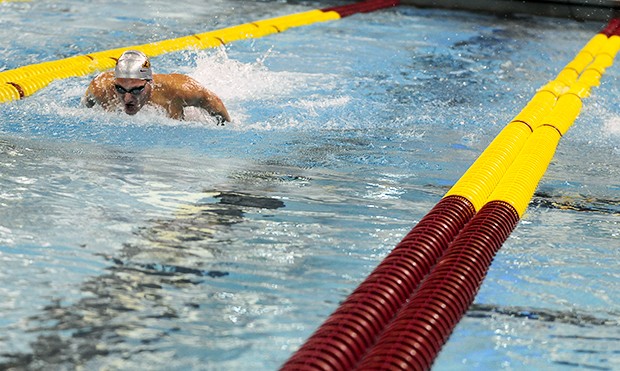
Image by Ashley Goetz
Published March 25, 2009
0
More to Discover


